A vertical conducting ring of radius R falls vertically in a horizontal magnetic field of magnitude B. The direction of B is perpendicular to the plane of the ring. When the speed of the ring is v,
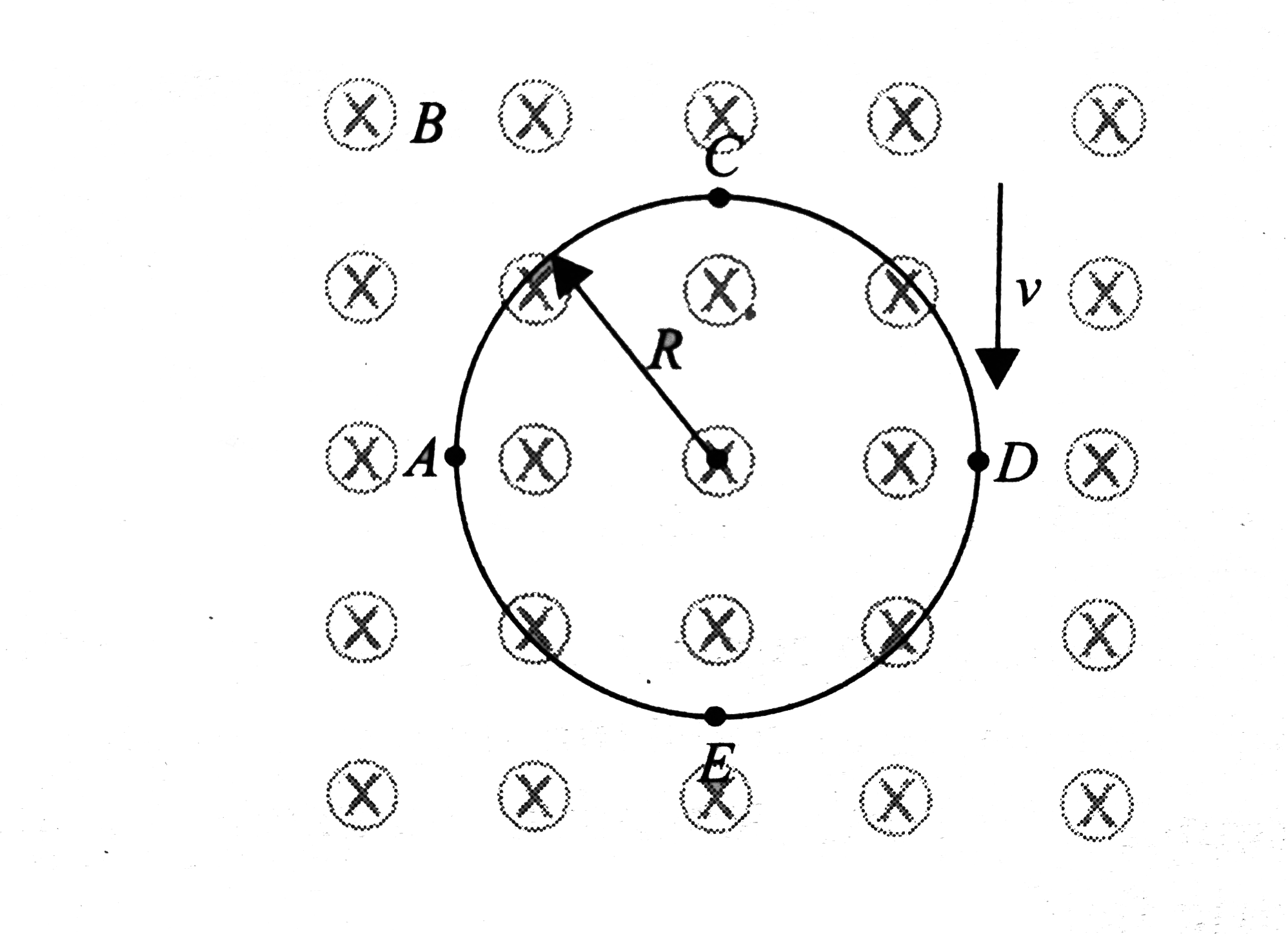
no current flows in the ring
A and D are the same potential
C and E are the same potential
the potential differece between A and D is 2BRv with D at a higher potential
The correct Answer is:C, D
Step by step video, text & image solution for A vertical conducting ring of radius R falls vertically in a horizontal magnetic field of magnitude B. The direction of B is perpendicular to the plane of the ring. When the speed of the ring is v, by Physics experts to help you in doubts & scoring excellent marks in Class 12 exams.
Topper's Solved these Questions
Similar Questions
A thin semicircular conducting ring of radius R is falling with its plane vertical in a horizontal magnetic induction B. At the position MNQ shown in the fig, the speed of the ring is V. The potential difference developed across the semicircular ring is
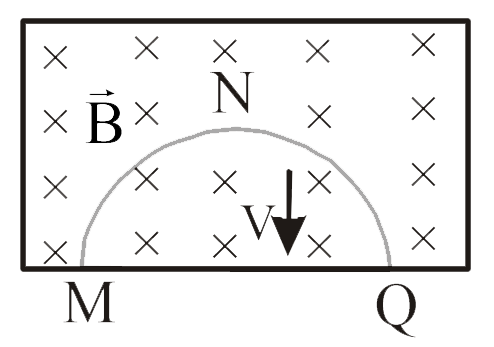 View Solution
View SolutionA conducting ring of radius r and resistance R is placed in region of uniform time varying magnetic field B which is perpendicular to the plane of the ring. It the magnetic field is changing at a rate α, then the current induced in the ring is
View Solution
Knowledge Check
- Question 1 - Select One or More
A vertical conducting ring ogradius R falls vertically in a horizontal magnetic field of magnitude B. The direction of B is perpendicular to the plane of the ring. When the speed of the ring is v,
 A(a) no current flows in the ringB(b) AandD are at the same potentialC( c) CandE are at the same potentialD(d) the potential difference between AandD is 2BRv, with D at a higher potetial
A(a) no current flows in the ringB(b) AandD are at the same potentialC( c) CandE are at the same potentialD(d) the potential difference between AandD is 2BRv, with D at a higher potetial - Question 2 - Select One
A vertical conduction ring of radius R falls vertically in a horizontal magnetic field of magnitude B with constant speed v . The direction of B is perpendicular to the plane of the ring. When the speed of the ring is v , (i) A and D are at different potential
(ii) A and D are at the same potential
(iii) C and E are at the same potential
(iv) The potential difference between A and D is 2BRv , with D a higher potential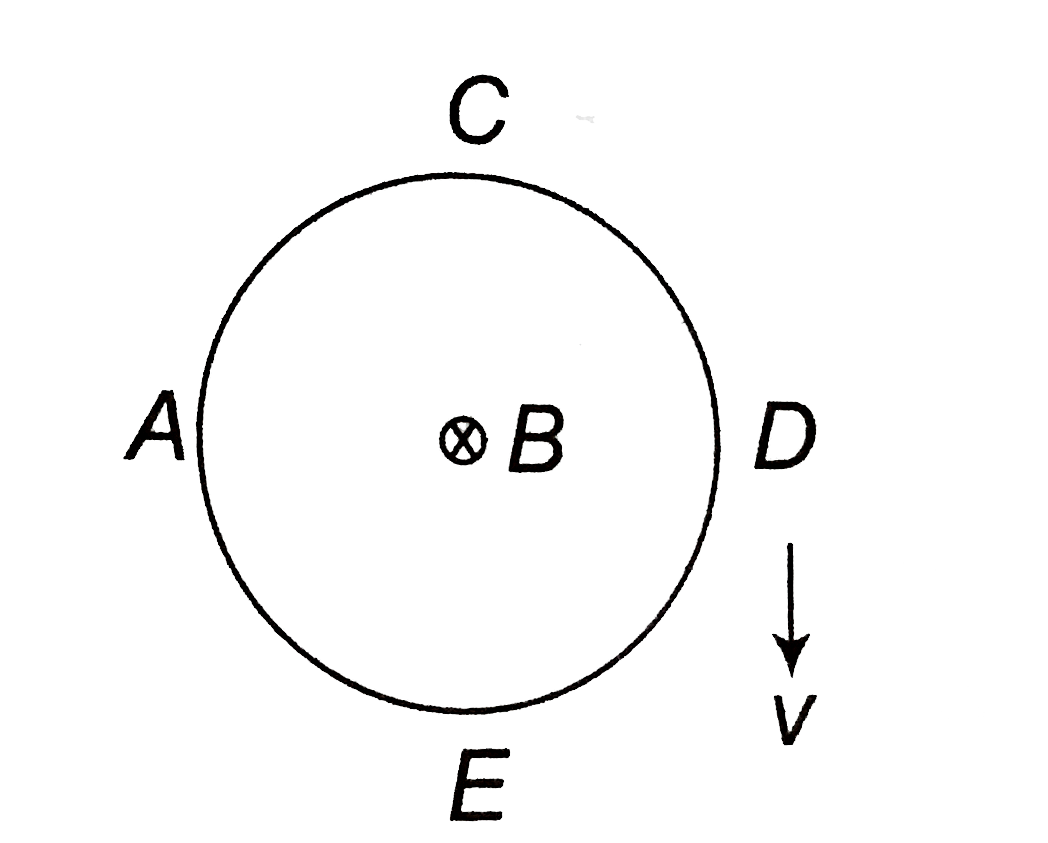 A(i),(iii)B(ii),(iv)C(i),(iii),)iv)D(ii),(iii)
A(i),(iii)B(ii),(iv)C(i),(iii),)iv)D(ii),(iii) - Question 3 - Select One
A vertical conducting ring of radius R falls vertically with a speed V in a horizontal uniform magnetic field B which is perpendicular to the plane of the ring. Which of the following statements is correct?
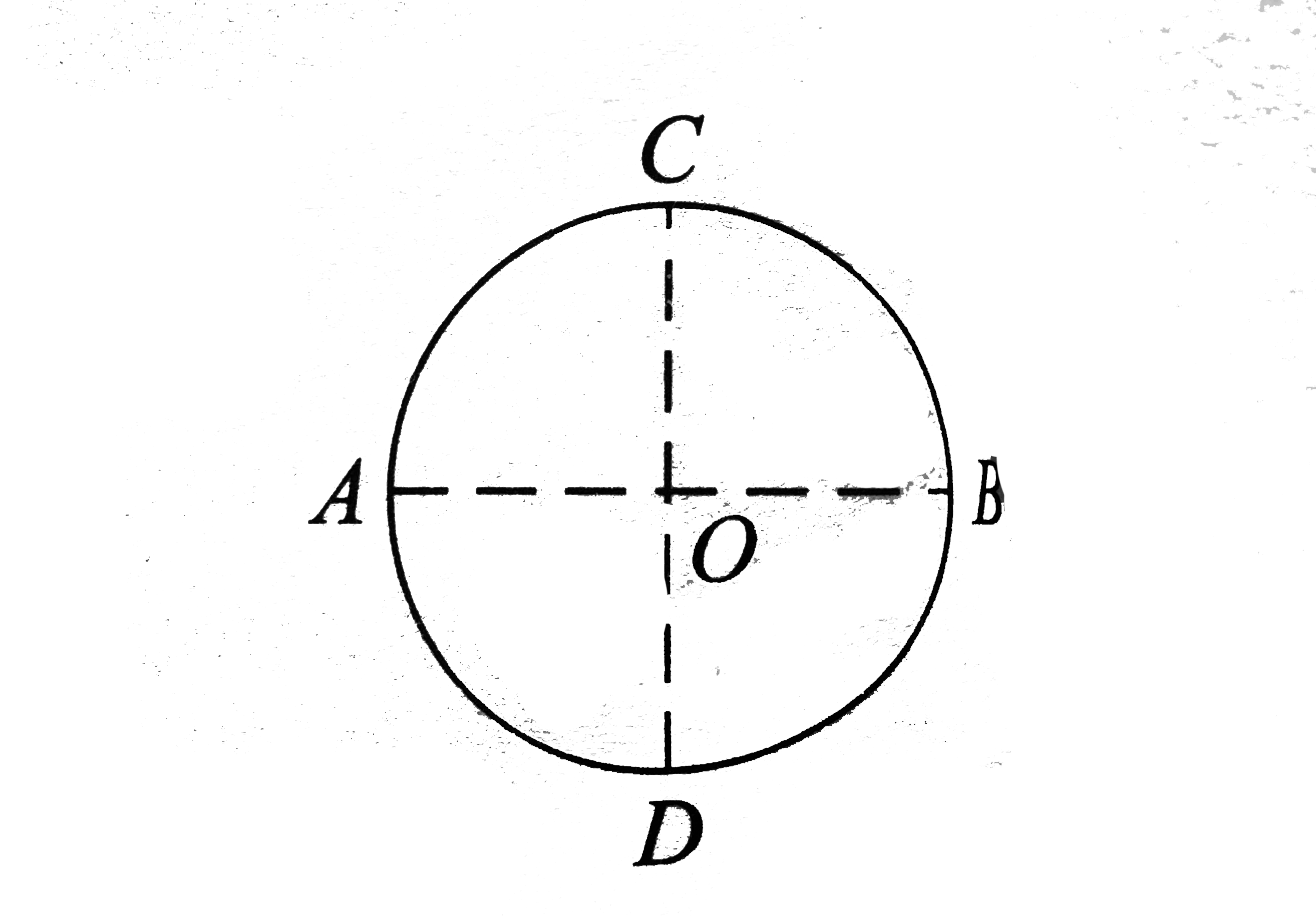 A(a) AandB are at the same potentialB(b) CandD are at the same potentialC( c) current flows in clockwise directionD( d) current flows in anticlockwise direction
A(a) AandB are at the same potentialB(b) CandD are at the same potentialC( c) current flows in clockwise directionD( d) current flows in anticlockwise direction
A vertical ring of radius r and resistance on R falls vertically. It is in contact with two vertical rails which are joined at the top. The rails are without friction and resistance. There is a horizontal uniform, magnetic field of magnitude B perpendicular to the plane of the ring and the rails. When the speed of the ring is v , the current in the section PQ is
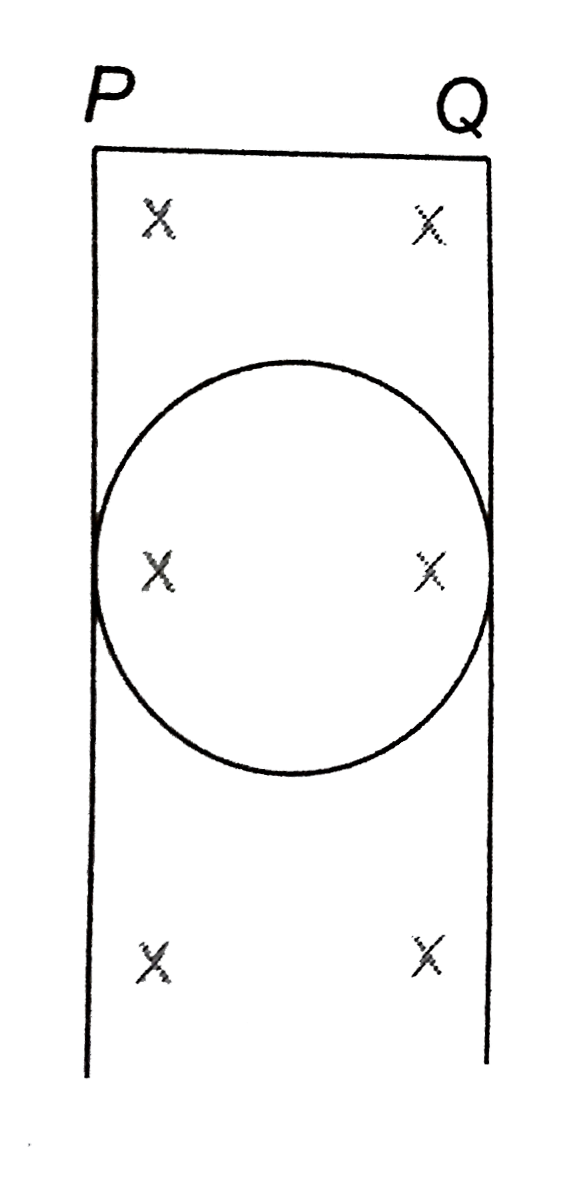 View Solution
View SolutionA thin semicircuilar conducting ring (PQR) of radius r is falling with its plane vertical in a horizontal magnetic field B, as shown in Fig. The potential difference developed across the ring when its speed is υ, is
 View Solution
View SolutionA conducting ring of radius 2R rolls on a smooth horizontal conducting surface as shown in figure-5.295. A uniform horizontal magnetic field B is perpendicular to the plane of the ring. The potential of A with respect to O is:
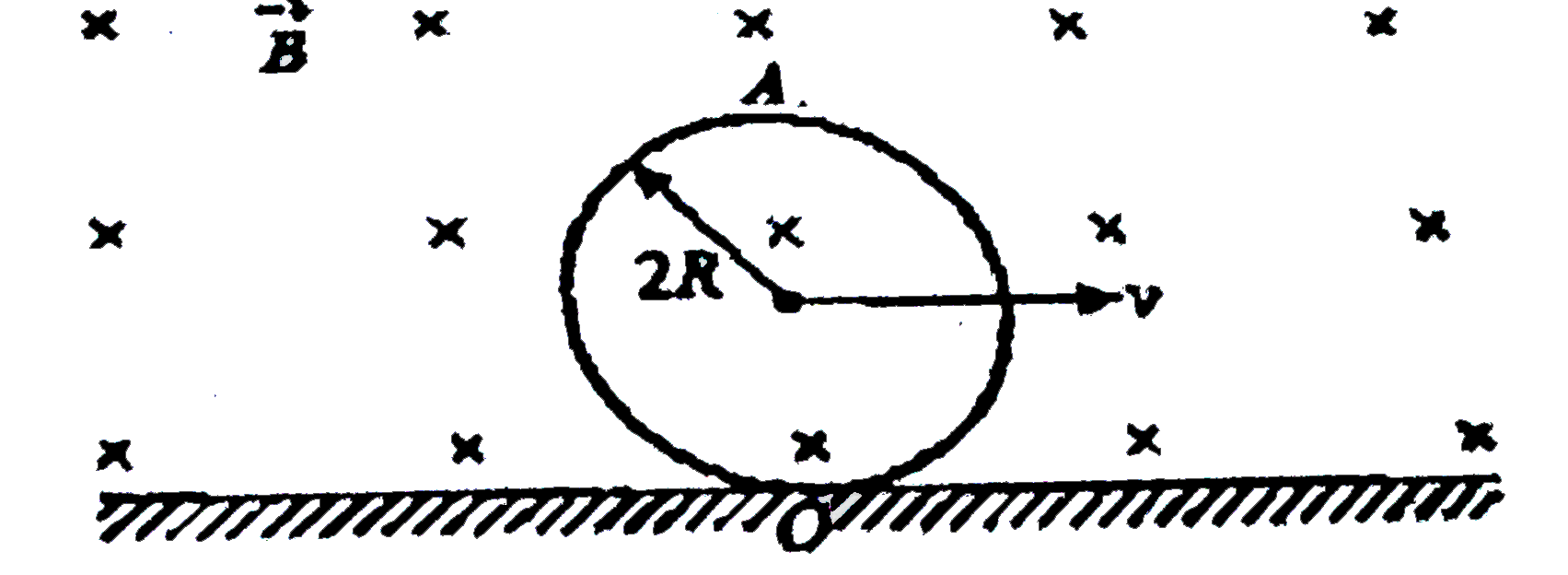 View Solution
View SolutionA thin semi-circular conducting ring of radius R is falling with its plane verticle in horizontal magnetic induction (→B). At the position MNQ the speed of the ring is v, and the potential difference developed across the ring is
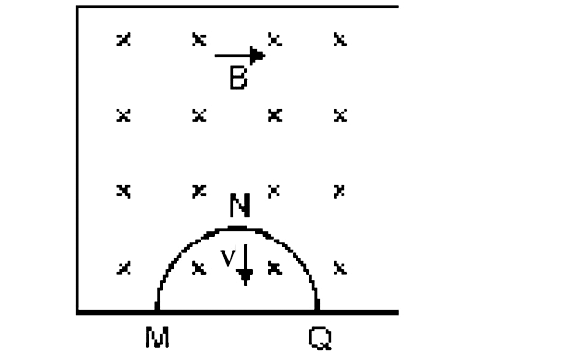 View Solution
View SolutionA thin circular -conducting ring having N turns of radius R is falling with its plane vertical in a horizontal magnetic field B . At the position MNQ the speed of ring is v the induced e.m.f developed across the ring is
 View Solution
View Solution

